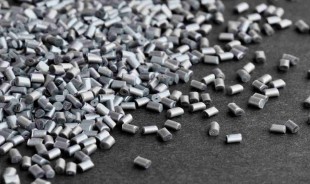Radioprotective garments may come in all shapes and sizes, but there are two that you really need to concern yourself with – lead protective garments and lead-alternative protective garments. One often needs to use a combination of radiation protection garments such as aprons, vests, protective eyewear and kilts to protect radiation workers, so it’s even more important to understand the differences between the two. And considering all the lead poisoning cases coming up, it always helps to have some additional information about lead-free shielding at hand.
What are Lead Protective Garments?
Lead aprons are conventionally made using lead powder which was bonded in thick rubber to allow the apron to be long-lasting and comfortable. The radiation protection offered by these lead garments was 0.50mm lead which would transmit about 2% of a fluoroscopic x-ray beam. Sounds great until you realize that the garments are actually made of lead!!
What are Lead-Alternative Protective Garments?
 Lead-alternative protective garments, on the other hand, offer a similar level of radiation protection without forcing you to deal with the use of lead and make yourself succumb to the dangers of lead poisoning. These garments use radiation shielding materials such as antimony, tungsten and bismuth and the level of protection offered is almost identical.
Lead-alternative protective garments, on the other hand, offer a similar level of radiation protection without forcing you to deal with the use of lead and make yourself succumb to the dangers of lead poisoning. These garments use radiation shielding materials such as antimony, tungsten and bismuth and the level of protection offered is almost identical.
Advantages of Using Lead-Alternative Protective Garments
So what is it that makes these lead-free shielding garments so beneficial? The main advantage of using these garments is that they are non-hazardous and environment-friendly. Hospitals replacing lead protective garments with these alternatives have also seen cost savings as disposing of worn out lead protective garments is a major disadvantage. On the other hand, these alternatives can simply be disposed via the conventional waste stream. Moreover, the garments are lighter and still offer the same protection. And we don’t need to remind you that these radiation shielding garments don’t use lead!
Can I Determine the Lead Equivalence?
Since lead-alternative protective garments don’t use lead, determining lead equivalence might be a problem. Since alternative materials absorb radiation effectively over a narrow range, a number of different metals need to be used in a matrix in order to spread out the range as much as possible. However, this also implies that lead-alternative protective garments tend to depend on x-ray energy and thereforethe term “lead-equivalence” might not accurately describe its protective value.
So Can I Go Lead-Free?
 If one is thinking about switching to a lead-free shielding garment, it is essential to consult a medical physicist or radiation safety officer before making the switch. These professionals can give you an EDE1 radiation monitor which uses 2 dosimeters in order to evaluate the protective value of the new garment so that one can directly evaluate the protective value of lead-alternative protective garments with regards to the work environment.
If one is thinking about switching to a lead-free shielding garment, it is essential to consult a medical physicist or radiation safety officer before making the switch. These professionals can give you an EDE1 radiation monitor which uses 2 dosimeters in order to evaluate the protective value of the new garment so that one can directly evaluate the protective value of lead-alternative protective garments with regards to the work environment.
Lead-alternative protective garments can offer similar protection at reduced weights, but they also offer a great fit. Those who need to radiation protection garments on a day-to-day basis can really make do with these as custom-fitted kit and vest combinations reduce the orthopedic strain. And it’s not just the fit, the weight and protective value can also be considered!






0 comments:
Post a Comment